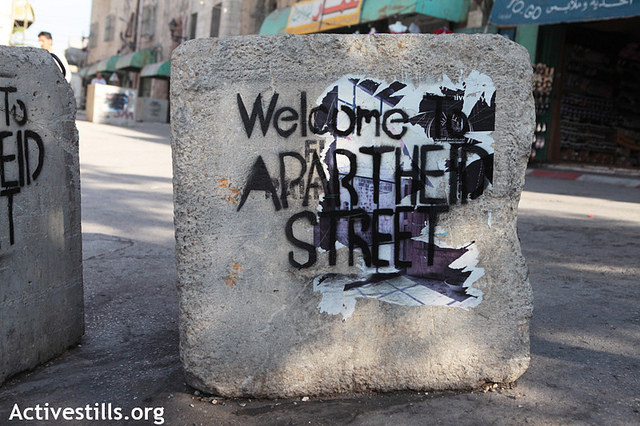Category: Reports
-
“We will stand in front of the bulldozers” – Beit Dajan homes threatened with demolition
25th May 2013 | International Solidarity Movement, Team Nablus | Beit Dajan, Occupied Palestine Five houses are facing demolition orders on the outskirts of Beit Dajan, a village located 10 kilometers east of Nablus. In the last month the Israeli Army have entered the village and presented residents of three of the homes with demolition…
-
Kafr Qaddum – Blocked from life’s basics; pushed back when doing something about it
24th May 2013 | International Solidarity Movement, Nablus Team | Kafr Qaddum, Occupied Palestine Tear-gas showered down on villagers in Kafr Qaddum yesterday, nearly blinding one media worker in a direct hit and nearly suffocating a child as villagers protested the roadblock that has hindered their lives for a full decade. The villager’s own stone…
-
Jamila Shalaldeh, accused of assaulting 13 soldiers found innocent by Ofer Military Court
23th May 2013 | International Solidarity Movement, Team Khalil, Hebron, Occupied Palestine On Tuesday 21st May, Jamila Shalaldeh was found innocent by Ofer Military Court of assaulting 13 soldiers. Jamila and her son Abdel were visibly nervous before her trial. Fortunately, the Israeli military judge agreed with Jamila and her family that the charges against…


